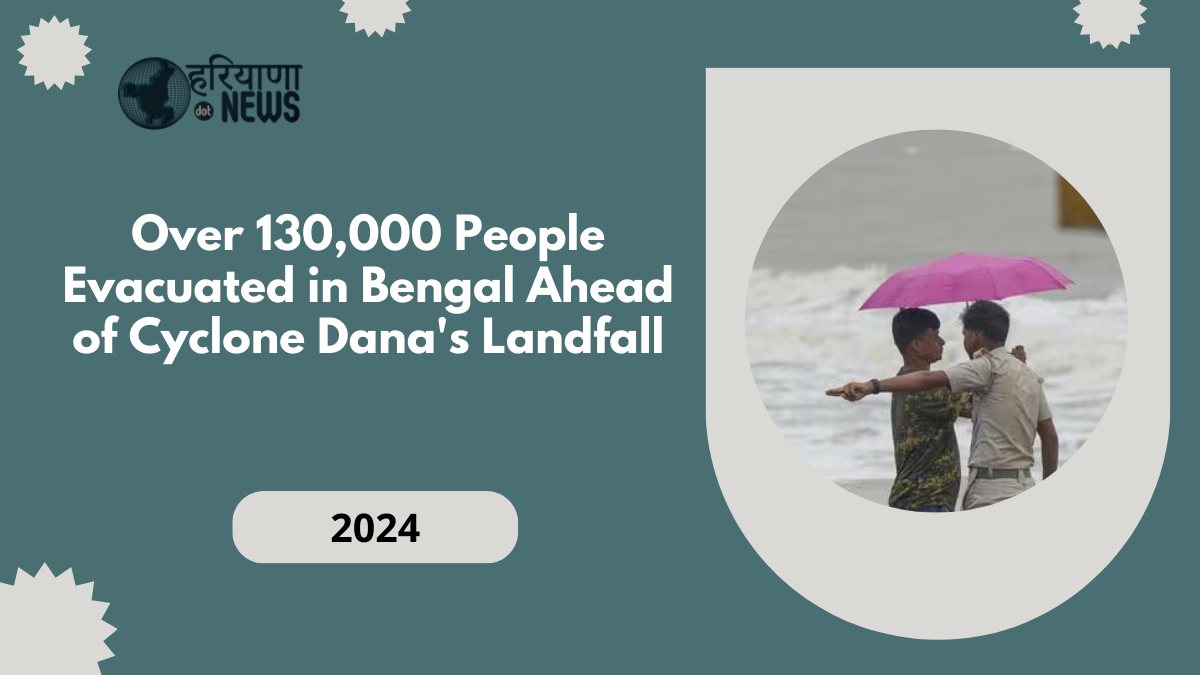Cyclone Dana was predicted to hit the eastern coast late Thursday, bringing intense rainfall. Due to the severe weather threat, the Kolkata airport was scheduled to remain closed from Thursday at 6 PM until Friday at 9 AM.
Massive Evacuations in West Bengal as Cyclone Approaches
In preparation for Cyclone Dana, approximately 130,000 residents have already been moved from the coastal and low-lying regions of West Bengal, with further evacuations likely. The cyclone, packing winds of up to 120 kilometres per hour, was set to strike the eastern coast late on Thursday.
This powerful storm was also expected to unleash heavy rainfall, leading to the suspension of operations at Kolkata airport from Thursday evening to Friday morning. In response to the cyclone, both South Eastern and Eastern Railways cancelled train services. Additionally, ferry operations between Howrah and Kolkata across the Hooghly River were halted.
Government’s Preparedness Measures
West Bengal’s disaster management and civil defence minister, Javed Khan, confirmed that over 100,000 individuals from vulnerable coastal zones, especially in East Midnapore and South 24 Parganas, have been evacuated. “More evacuations are planned as the day progresses. Preparations are in full swing,” he stated.
Cyclone’s Location and Path
According to the India Meteorological Department (IMD), Cyclone Dana was positioned over the northwest and central Bay of Bengal at 5:30 AM on Thursday. It was located approximately 260 km southeast of Paradip in Odisha and 350 km south of Sagar Island in West Bengal.
The IMD forecasted that the cyclone would likely move northwestward, making landfall between Puri (Odisha) and Sagar Island (West Bengal), near Bhitarkanika and Dhamara in Odisha, early on Friday. The storm was expected to be severe, with wind speeds reaching 100-110 km/h and gusts of up to 120 km/h.
Historical Context: Cyclone Remal
Earlier this year, in May, another severe storm, Cyclone Remal, hit the coastal regions of Bangladesh and West Bengal, leaving significant destruction in its wake. Three coastal districts in West Bengal suffered heavily, with six fatalities and over 200,000 people displaced as a result of the cyclone.
 Mumbai Police Detain Woman for Threatening Call on Prime Minister Modi’s Life
Mumbai Police Detain Woman for Threatening Call on Prime Minister Modi’s Life
 Hemant Soren was sworn in as the Chief Minister of Jharkhand for the fourth time, took oath as Jharkhand’s 14th chief minister
Hemant Soren was sworn in as the Chief Minister of Jharkhand for the fourth time, took oath as Jharkhand’s 14th chief minister
 India’s Strategic Breakthrough: Advancing SLBM Capabilities with INS Arighaat
India’s Strategic Breakthrough: Advancing SLBM Capabilities with INS Arighaat
 Chinmoy Das Arrest: High Court Petition Seeks Ban on ISKCON Amid Rising Violence Against Hindus in Bangladesh
Chinmoy Das Arrest: High Court Petition Seeks Ban on ISKCON Amid Rising Violence Against Hindus in Bangladesh
 Bangladesh Police Use Tear Gas and Batons Against Hindu Protesters After Chinmoy Das’ Arrest
Bangladesh Police Use Tear Gas and Batons Against Hindu Protesters After Chinmoy Das’ Arrest





Warnings and Alerts Issued for Bengal
In anticipation of Cyclone Dana’s impact, the IMD issued a red alert for the districts of East Midnapore, West Midnapore, and South 24 Parganas. Meanwhile, an orange alert was declared for areas including Kolkata, Howrah, Hooghly, and North 24 Parganas. These regions were expected to experience rainfall exceeding 200mm, with hefty downpours anticipated in Kolkata.
Detailed Evacuation in East Midnapore
An official from East Midnapore reported that more than 80,000 individuals had been evacuated from around 13 blocks, with roughly 25,000 relocated to emergency camps. “The areas most at risk are around 7-8 blocks that are directly exposed to the sea,” the official explained. This district is home to popular coastal spots like Digha and Mandarmani, making it especially vulnerable to the cyclone.
South 24 Parganas: Additional Evacuations and Deployment of Forces
In the South 24 Parganas district, over 50,000 people have been relocated from coastal villages. They have been moved to designated cyclone shelters and various government buildings. The district has also deployed five teams from the National Disaster Response Force (NDRF) and State Disaster Response Force (SDRF) in high-risk areas, including Gosaba, Sagar, Namkhana, and Kultali. Officials have set up control rooms at district, sub-division, and block levels to monitor the situation closely.
Click here to know more.






